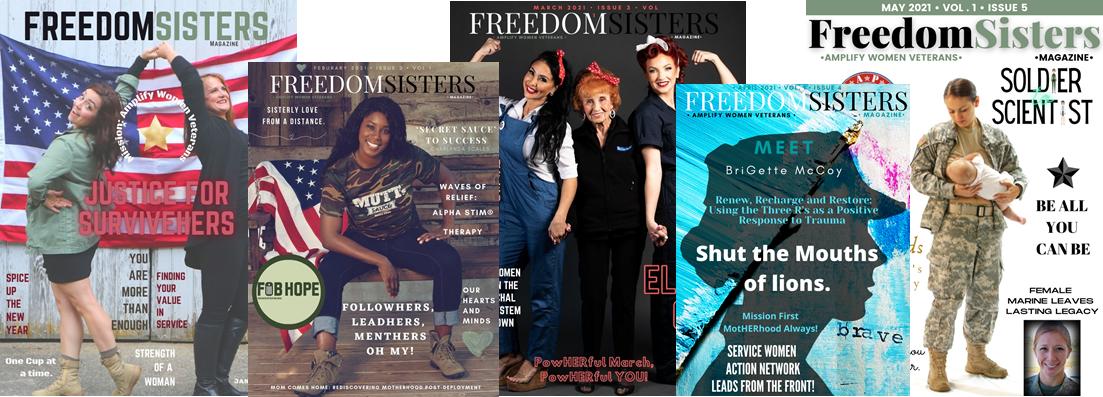
7 minute read
•Women Trailblazers in Military History
By: Jacqueline Zappey
Some people don’t know that women have been serving in our nation’s military since the American Revolutionary War; women would disguise themselves as men to serve in the war and even led other soldiers into battle. This continued through the Civil War. Women also supported war efforts in other capacities as nurses, cooks, washed clothes and sewed uniforms.
Advertisement
During World War I, women continued to serve because of a need for more able bodied military members.
Due to a vaguely stated section of the Naval Act of 1916 which outlined who could serve created a loophole allowing women to join the ranks as Yeomen, noncommissioned officers. Yeomans performed clerical and administrative duties such as filing paperwork, keeping records and sending correspondence. Around 12,000 women joined the reserve forces to replace men on shore duty so the men could go off to fight on the front lines. These women received equal pay to their male counterparts (Women in World War I, n.d.).
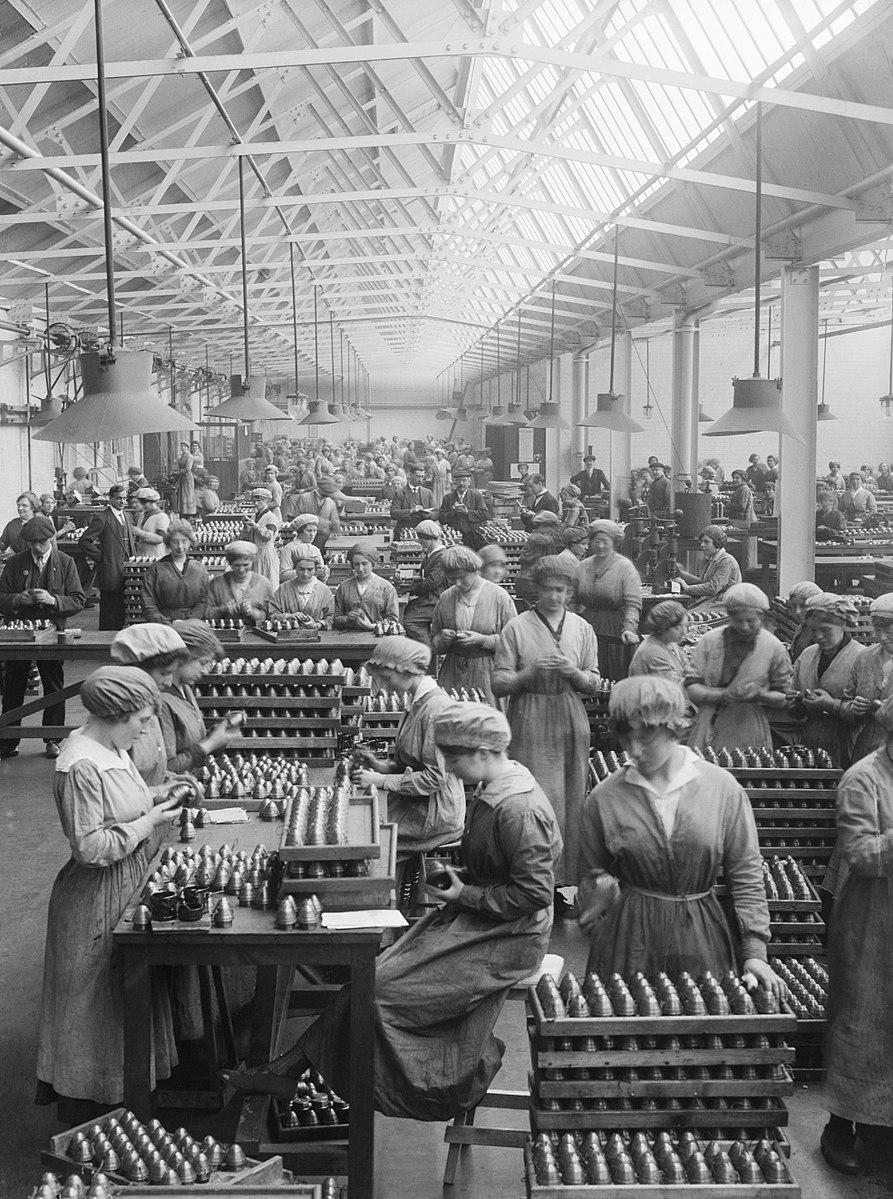
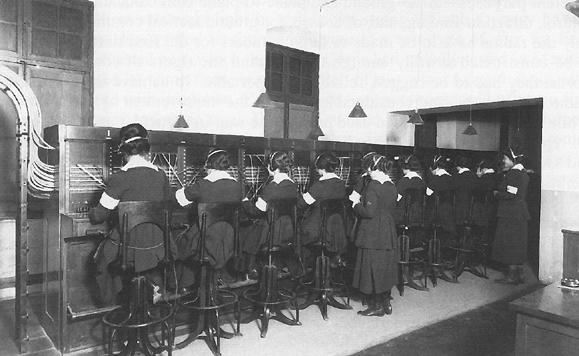
In 1917, bilingual women were enlisted to operate switchboards that connected phones. Radios and morse code systems at the time were slow and not user friendly. The women would work for the Signal Corps and were later known as the Hello Girls (Boissoneault, 2017).

The Hello Girls were a huge help as they connected millions of calls to help win WWI. They did this by cutting down the time on connecting calls from 60 seconds to around 10 seconds; a staggering 1/6th of the time faster than the men.
After World War I, the Hello Girls were appalled to find that even though they took an oath of enlistment to support and defend the constitution, they were not awarded Veteran status or benefits.
It wasn’t until the late 1970’s that President Jimmy Carter retroactively acknowledged the Hello Girls as Veterans.
Unfortunately, by this point, only a handful of these women were still alive (Jones & Christenson, 2019). Women continued to serve in various capacities in the armed service. On Nov. 23, 1942, during World War II, legislation was approved creating the U.S. Coast Guard Women's Reserve, also known as SPARs.
The SPARs were vital in World War II holding various positions as Yeomans, aviation, vehicle drivers, among others (Thomson, n.d.).
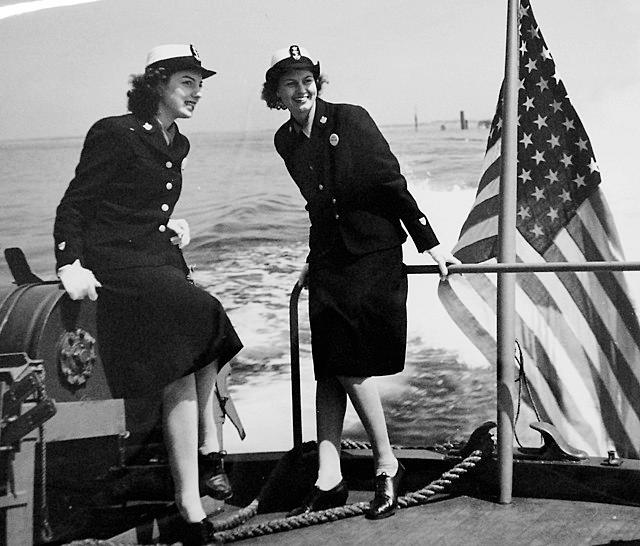
Gladys Hughes, was one of the 10,000 SPARs who served during WWII- a true trailblazer on many fronts. Not only did she serve, but Hughes was also a teacher, mother, author, theater director and beauty pageant Queen for various competitions.
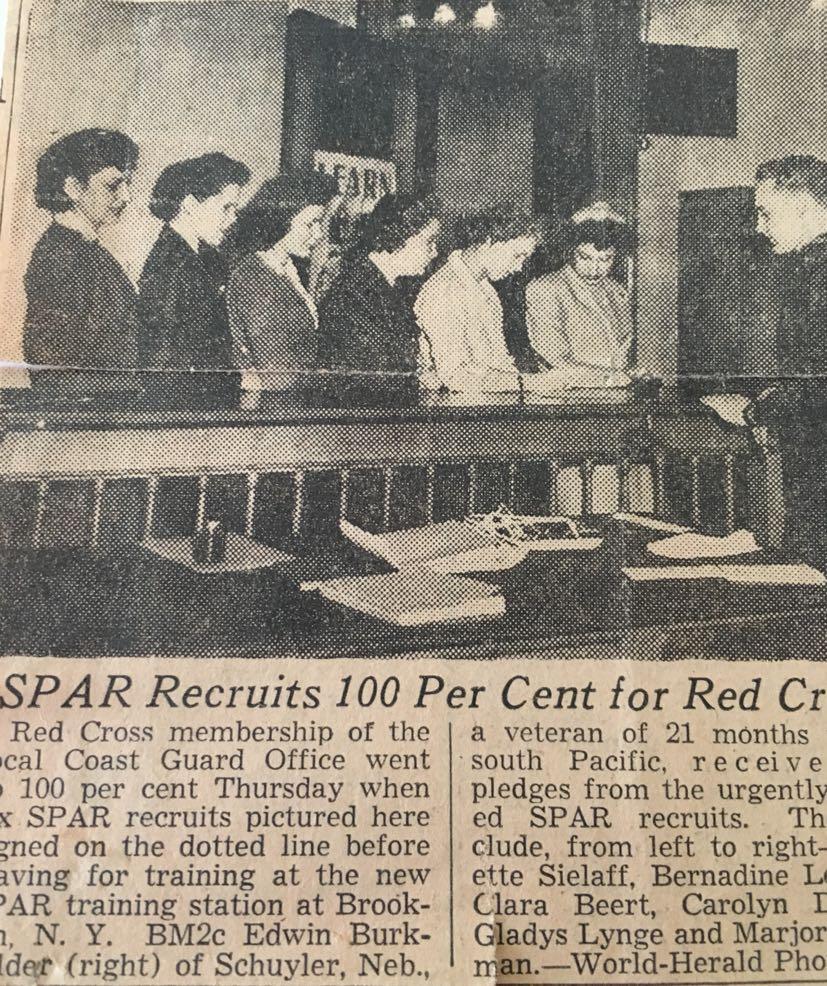
Gladys (Lynge) Hughes signs into the Red Cross before going to recruit training at SPAR training station in Brooklyn, New York. (fifth from the left, signing). // Courtesy Photo of Bonnie Hughes.
In 2012, Ms. Hughes was crowned second runner up in the Ms. Veteran America Competition and still the only WWII veteran to ever compete.
JZ: Tell us a bit about yourself (age, family, hobbies, careers, etc.)
GH: I was born in Omaha, Nebraska on September 23, 1923. So that makes me getting close to 98 years old. I had a good home life with my Dad, Mom and two sisters (all deceased).
I grew up in Hastings, Nebraska (dust bowl days) and went off to Dana College. There I met Hughie Hughes.
Little did I know then that one day he would be my husband. I guess theater would be my hobby.
I was constantly performing in plays and enjoying every minute of it. Because of my love for the theater, my major in college was in performing arts and English.
This eventually, after the war, led to my graduation from the University of Nebraska in 1952. I taught Speech, Theater, and English for 30 years.
JZ: What made you decide to join the Coast Guard SPARs?
GH: We turn back the clock now for Question 2. During the summer months after my Sophomore year of college. I worked for United Airlines ground crew in Omaha.
I threw airmail bags on the planes, I crawled on top of oil tanks, I worked ground crew jobs when planes landed and I liked my job. It was usually a man’s job but the men were all in the war.
Women were hired. Then fall came and I headed back to college as a Junior. I was restless after my summer job. During Christmas vacation I was in Omaha where my parents now lived.
I was downtown at the Post Office, saw the SPAR poster, went to the recruiter, listened to him, and signed up. I have always been patriotic and felt good about my decision. My parents were proud of me.
JZ: What was basic training like?
GH: Basic training was hard work at times. We had hours of classes and studies, hours of marching and drills, hours of peeling potatoes and hours of duties. But I knew why I was there and did my best.
JZ: When did you serve and for how long?
GH: I served for 14 months. When the atom bomb was dropped on August 6,1945, the war was soon over and I was discharged six months later in March 1946. I signed up for the duration plus six and that is what I served.
JZ: Where did you serve?
GH: Boot camp was at the Manhattan Beach Training Station in Brooklyn, New York. After Boot Camp I was stationed right at that base. I was to be trained as a Medic.
I learned so much in a short time and worked there until late in the year. I got married in August (August 5, the day before the atom bomb was dropped).
Hughie had just returned from D day in Europe and was stationed in California. I asked to be stationed closer and got my orders—Washington D.C. and stayed until I was discharged from there in March. GH: Since I entered the service late in the war, I never felt like I was one of the first women in the military. I was just a SPAR serving my country.
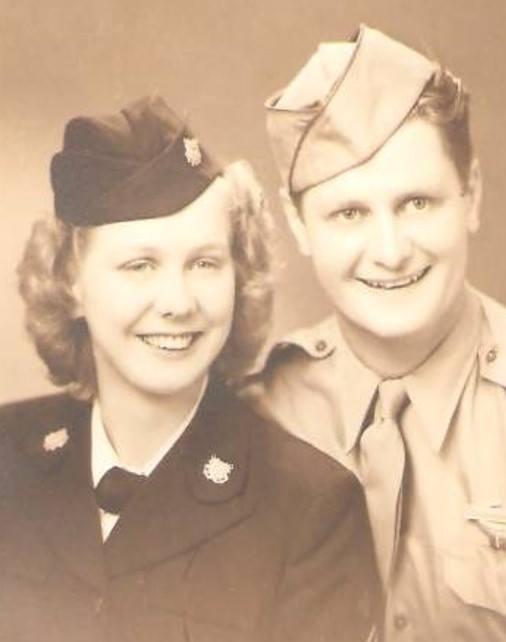
JZ: How did men perceive women who served during this time?
GH: I never felt unequal or was looked upon as unequal with the men. I was treated as a “nurse” despite not having the training nurses have. I worked three weeks day shifts and three week night shifts along with men or women on duty. Our job was to get the seamen well and back to their units as they trained for war duty.
JZ: What impact do you believe the SPARS had on the military during WWII?
GH: A SPAR’s job was to free a man to fight. That is what we did.
GH: I saw a tiny item about Ms. Veteran America in a WAVES newsletter and I sent for an application. There was no age limit so I filled out the application. I thought it would be nice to meet other Veterans. I did not realize they would all be so young. It is a wonderful experience to be with Ms. Veteran America.
JZ: Is there anything else you would like to add to your story?
GH: I want to add this to my story. I mentioned marrying Hughie on August 5, 1945. We were married 63 years and had a great life together. He passed away with cancer 12 years ago.
Our son Chuck is 74 now. He has a wife and four children, which now enlarges my family with seven great grands. Bonnie, our daughter, is 70 years old, divorced years ago and lives with me and is a great caregiver.
We have great times together and do theater work. Covid really slowed down our play schedule. I lost one baby boy, Douglas, who lived three hours.
Thanks to women like Gladys, President Harry S. Truman signed the Women’s Armed Services Integration Act into law on June 12, 1948.
This law allowed women to serve as permanent members of all branches of the U.S. military (The Editors of Encyclopaedia Britannica, 1999).
This law paved the way for many new women firsts in the military such as women graduating from Army Ranger school and becoming commanding officer of an aircraft carrier.
Gladys and other SPARS paved the way for other women to join the service. Ruth Bader Ginsburg once said, “Fight for the things you care about, but do it in a way that will lead others to join you. ”
It is so important to know our armed force's HERstory and honor those who fought hard to ensure women could continue to serve and excel in the military. Reach out to the women who served before to hear and commemorate their stories.
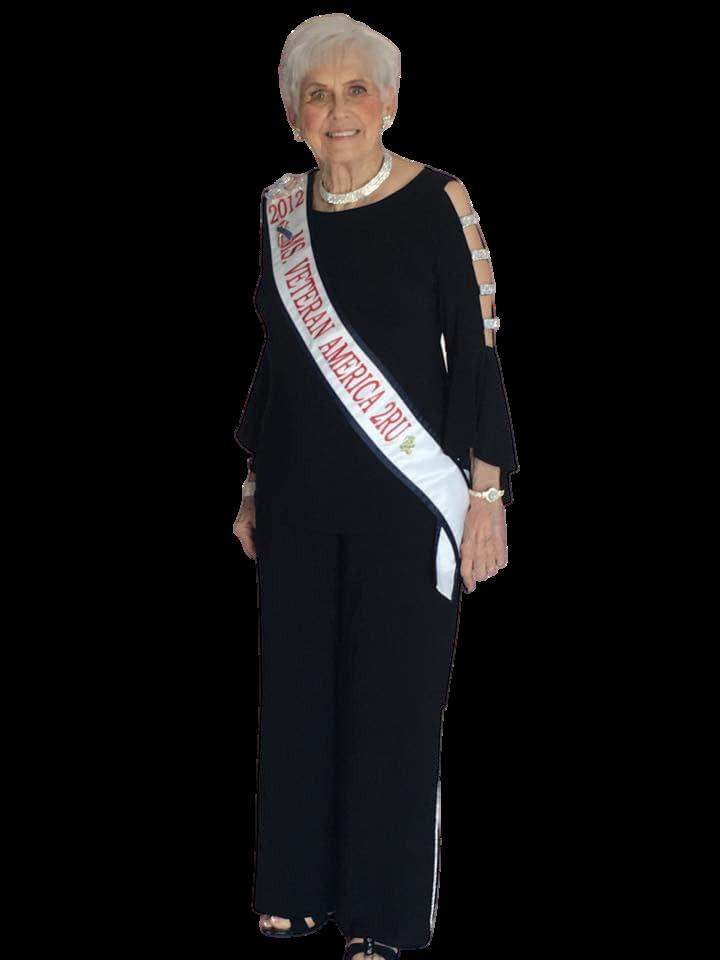
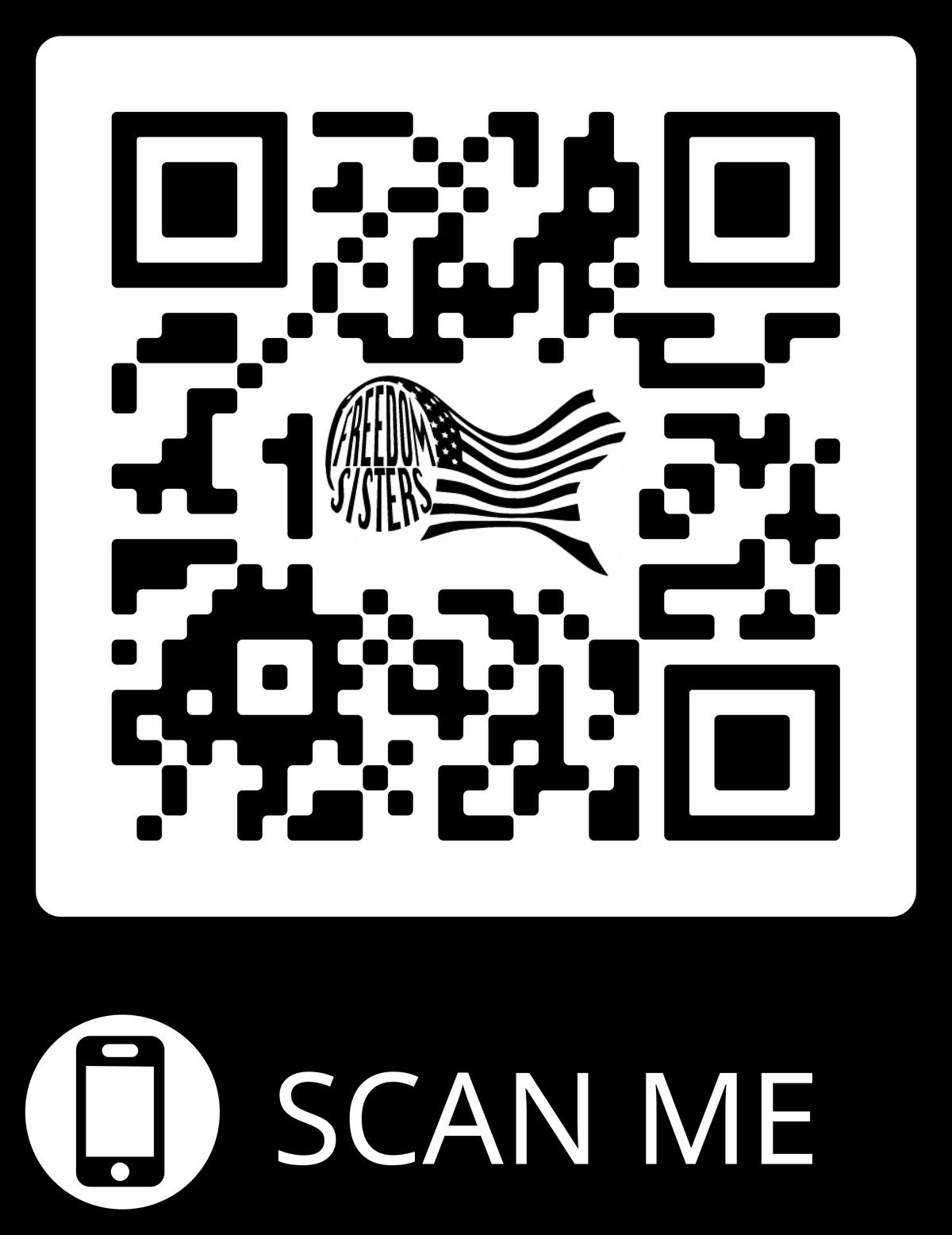
Scan code for a Free Issue of the magazine
The only monthly magazine for military women!
www.freedomsisters.com
